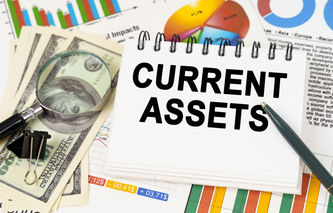Definition
The term expense coverage days refers to a metric that allows the investor-analyst to understand how many days a company can operate using their existing liquid assets. Expense coverage days are useful to understand if there is a risk the inflow of liquid assets may abruptly stop.
Calculation
Expense Coverage Days = Short-Term Assets / Daily Cash Expenditures
Where:
Short-term assets are equal to the total of the company's liquid assets such as cash, short-term marketable securities, and accounts receivable.
Daily cash expenditures are equal to the company's total annual cash expenditures divided by 360.Note: Since the daily cash expenditures is divided by 360 in the above calculation, the expense coverage days will be stated in calendar days - not business days.
Explanation
Cash flow measures allow the investor-analyst to understand if the company is generating enough cash flow from ongoing operations to keep the company in a financially sound position over the long term. One of the ways to understand how many days a company can operate using their existing liquid assets is by calculating their expense coverage days.
The investor-analyst can calculate a company's expense coverage days if they wish to understand the ability of a company to continue operating if liquid assets the flow of cash were to suddenly stop. The calculation can also be used to understand if there is an excess of liquid assets on the balance sheet, which can eventually result in a buy-down of debt or buy-back of common stock.
The metric first takes into consideration all of the assets that can be easily converted to cash such as short-term marketable securities, accounts receivable, and cash itself. This value is then divided by the company's annual cash expenditures divided by 360 days. Invariably, company's experience unusual financial events that requiring a larger than "normal" expenditure profile in a given year. For this reason, it may be useful for the investor-analyst to calculate a two or three-year average of their daily cash expenditures. It's important for this value to represent what the investor-analyst believes will be the expenditure pattern in the coming months.
Example
Company ABC's revenues are highly dependent on the award of long-term government contracts, which are currently up for review. The CEO of Company ABC is concerned their current contracts with the federal government will expire before new contracts are issued. To gain additional insights into the company's ability to survive this delay, the CEO has asked the comptroller to calculate Company ABC's expense coverage days.
Company ABC currently has cash reserves of $525,000, short-term marketable securities of $125,000 and accounts receivable in the amount of $365,000. The comptroller also determined the last 12 months of expenses ($6,084,000) were typical, and reflects the level of expected expenditures over the next four months.
Using this information the comptroller calculated Company ABC's expense coverage days as:
= $525,000 + $125,000 + $365,000 / ($6,084,000 / 360)= $1,015,000 / $16,900= 60.1 days
The above calculation reveals Company ABC is able to continue operating for 60 days using its liquid assets if there is a delay in the award of the government contracts.




